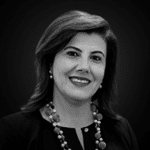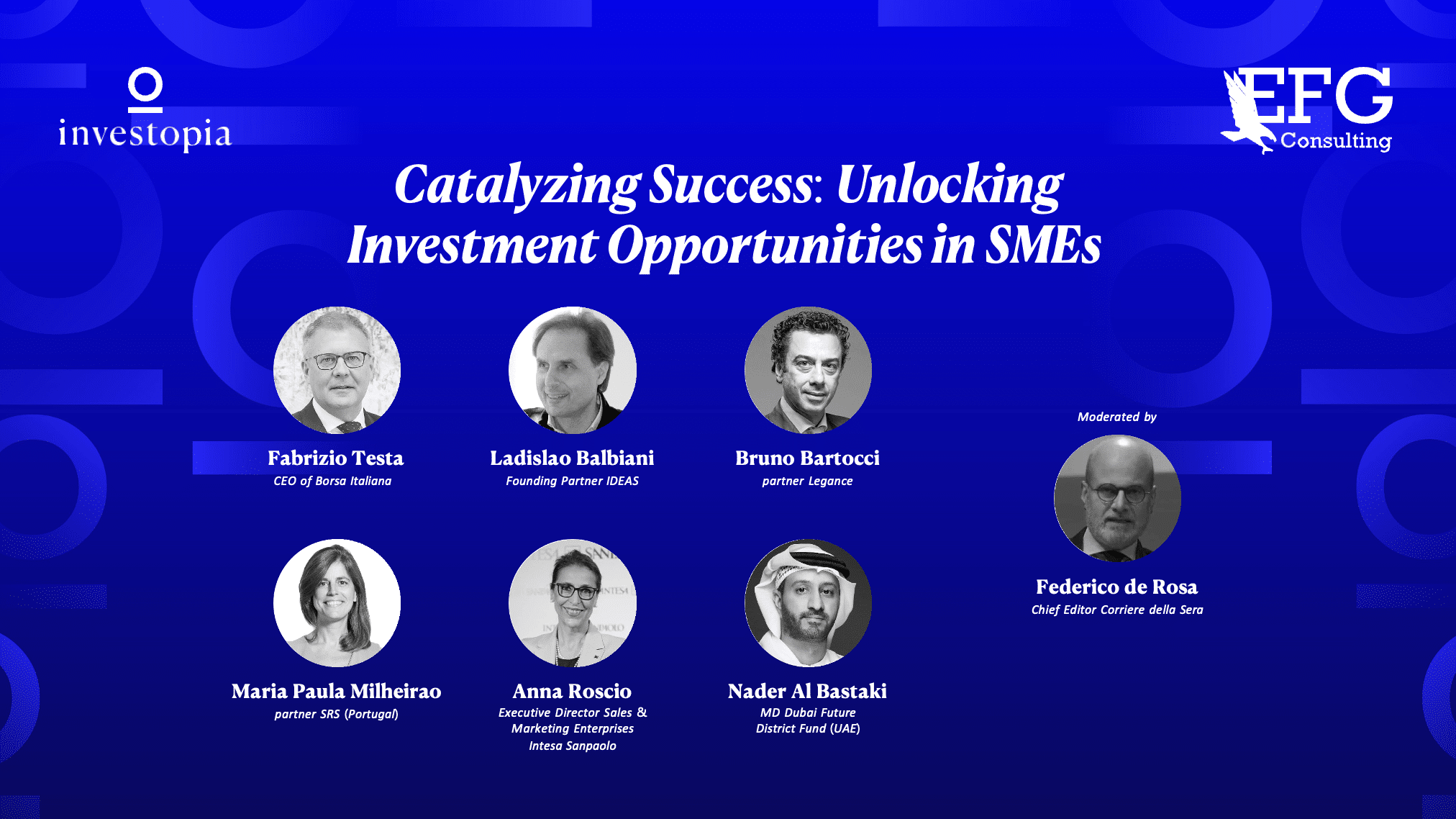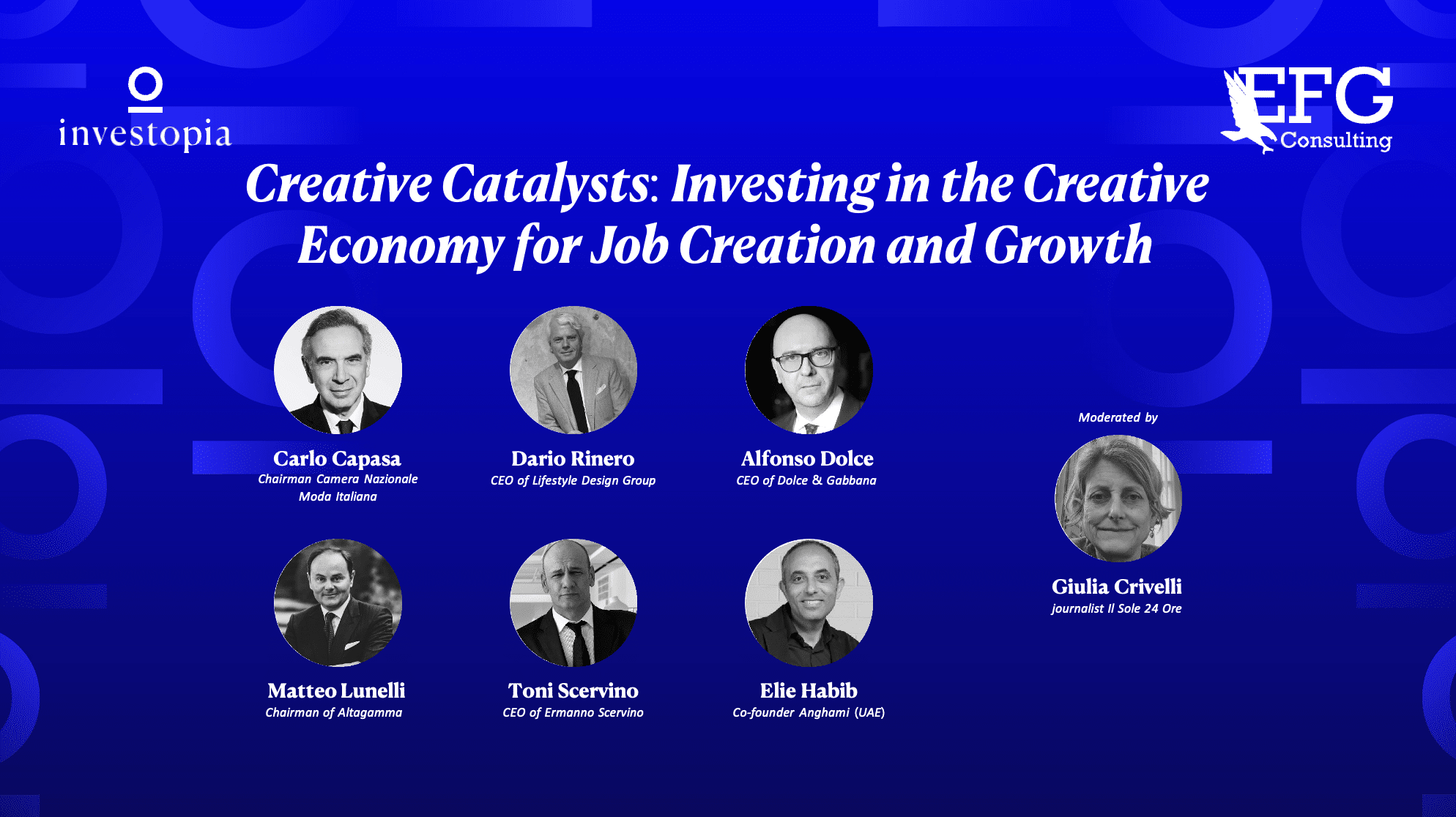Session Speakers:

Amanda Pullinger
CEO, 100 Women in Finance

Dr. Frannie Léautier
CEO, SouthBridge Investment

Elissar Farah Antonios
CEO, Citi UAE and MENA Cluster Head

Rola Abu Manneh
CEO UAE, Middle East & Pakistan at Standard Chartered
Share
Listen to this content
Key Takeaways
- Women are still under-represented in finance, with only 15% of women in executive-level positions.
- Women entrepreneurs face challenges such as discrimination when it comes to access to financing, requests for collaterals, and a lack of women investors.
- Gender parity in business growth could increase global GDP by as much as $2 trillion dollars, which translates into 2% to 3% of global GDP.
- Fintech solutions and blockchain technology offer opportunities to assess behavior and catch trends that can facilitate women's access to finance.
- The ecosystem needs to be addressed to provide more opportunities for women entrepreneurs, including challenging the notion that women are not "investable," encouraging "he for she" solutions, and nourishing the right networks for women entrepreneurs.
- Initiatives such as accelerator programs and investment vehicles targeting women-led SMEs can help increase women's participation in finance and entrepreneurship.
- Measurable solutions in hiring and promotion, mentorship and sponsorship programs, and a change in mentality that values the various leadership styles of both men and women are needed to address the lack of visibility of women in finance and leadership.
Investopia’s inaugural summit featured a session titled “Investing in Half the Sky: Tapping into Women Consumer and Investor Markets.” The panel consisted of Amanda Pullinger, CEO of 100 Women in Finance; Elissar Farah Antonios, MENA Cluster Head & CEO UAE of Citi; Frannie Leautier, Partner & CEO of SouthBridge Investment; and Rola Abu Manneh, CEO of Standard Chartered Bank UAE, with Fadi Ghandour, Executive Chairman of WAMDA Capital, serving as moderator. The session discussed the opportunities and challenges facing women in finance and entrepreneurship.
The Global Gender Report of 2017 indicated that female talent remains one of the most under-utilized business resources. Finance is still a male-dominated industry, and as career level rises, female representation declines. In fact, at the executive level, only 15% of financial services employees are women. Women drop off before reaching senior levels and are often reluctant to undertake leadership roles, while those in leadership roles lack the deserved visibility. Moreover, within organizations and companies, an inventory of men ready and willing to undertake leadership roles is always more developed and ready than one that includes their female counterparts.
Women also face discrimination when it comes to access to financing, and although microfinance initiatives report a strong payback record for women beneficiaries, this has not been translated into trust in women when it comes to managing risks and getting access to loans at the bank level. Women still make up the majority of the global unbanked population, and accessibility remains an issue, with only 30% of women having accounts compared to 40% of men.
Citi’s analysis indicates that if gender parity is achieved in business growth, global GDP could rise by as much as $2 trillion dollars, which translates into 2% to 3% of global GDP. Even further, bringing women into the workforce could reap an increase of 6% in the GDP. The increased focus on diversity and inclusion is creating new opportunities for women through the creation of supportive platforms. Fintech solutions present ample opportunities to boost the chances of women entrepreneurs, while blockchain technology can monetize many of women’s activities that are not visible otherwise. The rise of remote working has also boosted the chances for women’s participation in entrepreneurship.
To address the lack of visibility of women in finance and entrepreneurship, there is a need to encourage more inclusive frameworks, job descriptions, and notions of leadership qualities that embrace the variety of leadership styles among men and women. At the individual level, there is a need for more visibility for existing female leaders, as well as potential and aspiring ones, and for female investors to challenge perceived notions of “what investors look like”. Encouraging women to let go of perfectionism and jump on opportunities, even if they don’t tick all the boxes, is also important.
Women entrepreneurs face different challenges from those faced by their male counterparts, including the perception that women cannot manage risks, which poses substantive barriers to access to capital. The biggest access to finance gap is in equity, and encouraging “he for she” solutions and delivering results for women entrepreneurs by men in managerial positions to support female entrepreneurs can make a big demonstration of how to support. The ecosystem needs to be addressed as well, with nourishing the right network for women entrepreneurs being key, including networks of role models and mentors.
The panel highlighted initiatives that are working to address these challenges. For example, Chartered Bank UAE offers an accelerator program in collaboration with FinTech Hive, and this year’s edition focused on accelerating tech-stars that are sustainability-focused, ESG-led, and ready to make a positive impact in the world.
The CEO of Standard Chartered Bank UAE, Rola Abu Manneh, emphasized that the landscape of women entrepreneurship is changing and becoming more and more dynamic, with numerous programs available for women, yet there is still more to be done. She called for more visibility for successful female-led businesses with high valuations that can transition from SMEs to mid-market and beyond.
The panelists also highlighted a number of initiatives that are helping women in finance and entrepreneurship. For instance, the Chartered Bank UAE offers an accelerator program in collaboration with FinTech Hive that focuses on accelerating tech-startups that are sustainability-focused, ESG-led, and ready to make a positive impact in the world. Women participants presented proper business plans, and the program supported them in turning their proposals into adequate business models with accurate projections.
Furthermore, 100 Women in Finance registers more than 25,000 members in 31 locations with a mission to empower women in global finance and inspire the next generation to seek pathways into the industry. The organization set a guiding principle called “Vision 30/40,” with a goal for women to occupy 30% of investment team and executive leadership roles by 2040. The CEO of 100 Women in Finance, Amanda Pullinger, stressed that the organization creates visibility for women in various leadership roles, in private equity, venture capital, mutual funds, and other areas. Pullinger called for a change in perception of women in such roles to change the demographic.
Citi Group’s MENA cluster enhances the opportunities of women in leadership roles by establishing ownership and accountability at the level of senior management in terms of maintaining a good representation level for women. Starting with a 50% female rate at the basic hiring levels, followed by talent retaining and promotion, interviewing panels are expected to reflect and promote diversity as well. The group also sees value in programs such as mentorship and sponsorship that are key to secure women’s access to senior roles. Elissar Farah Antonios, MENA Cluster Head & CEO UAE – Citi, added that we need to put measurables in hiring and promotion and adopt wider solutions in terms of enabling environments, favorable ecosystems, and a change in mentality that values the various leadership styles of both men and women.
SouthBridge Investments developed various investment vehicles that target women-led SMEs, including a recently launched women-focused investment fund. Furthermore, SBI focuses on asset management and fund management in finance, manufacturing, and industry, SMEs, while focusing on their specific impact on women entrepreneurship, sustainable development, and green business. The CEO of SouthBridge Investment, Frannie Leautier, emphasized that leading by example is one of the key ways to bring rapid change.
In conclusion, the panelists agreed that there is enormous potential for investment and returns through the inclusion of underserved groups, particularly women, across the increasingly young and female purchasing power in emerging markets. The increased focus on diversity and inclusion is creating new opportunities for women through the creation of supportive platforms. Fintech solutions present ample opportunities to boost the chances of women entrepreneurs, and with blockchain technology, many of women’s activities that are not visible otherwise can be monetized. However, many challenges persist for women in finance and entrepreneurship, including lack of visibility, discrimination regarding access to financing, social factors affecting women’s chances and willingness for upward mobility, and lack of women investors. The panelists highlighted several solutions to address these challenges, including a more favorable ecosystem, more visibility for existing and potential female leaders, a change in mentality that values the various leadership styles of both men and women, and supportive platforms, among others.









